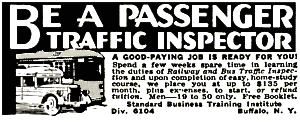THE basis of all Technicolor movies is the Technicolor
camera, of which there are only 14 in existence today.
They are valued at $16,000 each, and no one, outside
of Technicolor laboratory men, are permitted to
examine or operate them.
The camera consists of a big metal box surmounted
with two huge containers for triple film reels. Inside is
a maze of wheels, gears, springs, filters and hundreds
of precision-made moving parts that are the secret of
this magical movieland machine. Special high speed,
color-corrected lenses are made for these cameras.
Only one lense is used in each camera. Filters break up
the colors and pass them on to the three films. The
drawing shows the arrangement of the optical parts
and the films in this camera. A single film and a bipack
are used. A green filter transmits green light to the
panchromatic film. A magenta filter inside the camera
transmits red and blue, light to two films with
emulsion surfaces in contact. The front film has a blue
absorbing dye and is sensitive to blue only. The rear
film receives the red image.







